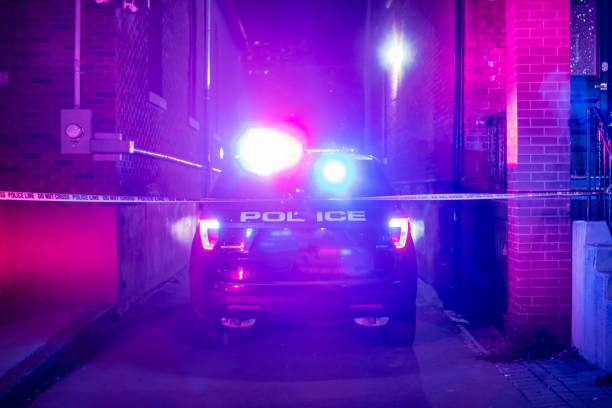The morning of Thursday, June 26, 2025, brought heartbreaking news to the South Phoenix community with the tragic death of 21-year-old Angel Gamboa-Serrano. A pedestrian struck in the early hours before dawn, his passing has left a lasting mark on both his family and the city, reigniting urgent conversations about pedestrian safety and the precarious relationship between drivers and foot traffic in Phoenix’s residential neighborhoods.
The incident unfolded just before 5:00 a.m., near the intersection of 16th Street and Wier Avenue—a zone with both steady vehicle movement and regular pedestrian presence. According to the Phoenix Police Department, Angel was crossing the street outside of a marked crosswalk at the time he was hit by an oncoming vehicle. The driver, whose identity has not been made public, remained at the scene and was described as cooperative throughout the ensuing investigation. Emergency responders arrived quickly and transported both individuals to a nearby hospital. Angel succumbed to his injuries shortly after arrival; the driver sustained only minor injuries.
Authorities have confirmed that, at this stage of the investigation, there are no indications of impairment or reckless behavior on the part of the driver. The preliminary conclusion suggests that the absence of a marked crosswalk was a critical factor in the collision. Investigators are still reviewing surveillance footage from nearby buildings, street cameras, and additional witness statements to ensure a thorough understanding of the incident. While no charges are anticipated against the driver, police have emphasized that the case remains open as they finalize their findings.
The neighborhood surrounding the crash site is one of mixed residential and commercial use, characterized by wide arterial roads where drivers often travel at high speeds and where pedestrian infrastructure is limited. This blend of environment has long been the subject of safety concerns among city planners and residents alike. Phoenix, despite efforts to improve walkability, consistently ranks among the most dangerous U.S. cities for pedestrians. Crossings outside designated crosswalks—especially during low-light conditions—remain a leading contributor to pedestrian fatalities.
Angel’s death is not just another statistic. He was a young man with dreams, relationships, and a future that now remains unfulfilled. While local authorities have not released many details about his personal life, the weight of his loss is being deeply felt by friends, neighbors, and all who knew him. His identity, now etched into the city’s collective memory, serves as a somber symbol of the fragility of life and the pressing need to address systemic shortcomings in pedestrian safety.
The crash has prompted renewed calls from traffic safety advocates for better infrastructure, including more marked crosswalks, improved lighting, speed-calming measures, and public awareness campaigns. Organizations dedicated to urban safety argue that design is destiny: when streets are engineered primarily for vehicle speed and throughput, pedestrian fatalities become an almost inevitable consequence. The area of 16th Street and Wier Avenue has previously been flagged for limited safe crossing points—a reality tragically underscored by Angel’s death.
Law enforcement officials have reiterated the importance of pedestrian safety, encouraging all individuals on foot to use marked crosswalks, wear visible clothing when walking during dark hours, and remain alert to traffic. Likewise, drivers are reminded that even in areas without crosswalks, they are legally obligated to exercise caution and yield to pedestrians in the roadway.
As Phoenix continues to grow, city leaders face mounting pressure to invest in infrastructure that protects all road users—not just motorists. Angel’s death comes amid a broader trend of rising pedestrian fatalities across the United States, many of which involve young adults and occur during low-visibility hours. The fatality underscores the complex dynamics between road design, personal behavior, and policy decisions.
For now, Angel Gamboa-Serrano’s family and community must grieve. Their mourning is compounded by the suddenness of the loss and the unanswered questions that linger, even as police near the conclusion of their investigation. Those who knew Angel remember him as vibrant and kind, someone who was navigating early adulthood with promise and potential. His life was cut short in an instant—his journey ended in a place so familiar, yet so perilous.
Plans for a memorial have not yet been publicly announced, but friends and community members have already begun to gather at the intersection where the crash occurred. A small memorial of candles, flowers, and handwritten messages grows each day—a quiet, powerful testament to the young man whose life was taken.
Angel’s story, while deeply personal, resonates widely. It touches on the universal human experiences of loss, vulnerability, and the longing for safety in the spaces we inhabit daily. It also serves as a call to action: to reconsider how our cities are built, how rules are enforced, and how lives like Angel’s can be protected rather than lost.
As the investigation comes to a close and more details are released, the hope among many is that Angel Gamboa-Serrano’s death will not be in vain. Let his memory be more than a headline—let it be a catalyst for change.

